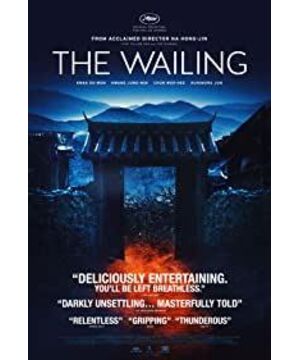The old man in Japan should represent the cult culture based on Christianity. Judging from the sheep bones on his altar and the black sheep hanging at the door of the protagonist's house the day after he was harassed, there is no doubt that it should be a demon. However, the scars on the palms and the pitiful crying scenes should be confusing to the world (audience). Even the little priest was finally reluctant to believe that he was a demon.
Sunlight and the white-robed woman are both native Korean religions (shamans), but there are differences here. Sunlight does possess mana, but it is a secular world, and it does not work without money. Therefore, the mana is limited, and after seeing the woman in white, she is crushed by her ability. At the end of the film, he took pictures of the scene like the old Japanese. Does it mean that he has fallen into the evil way like the devil? The photo is actually there to "scare" future clients into believing that they are making more money.
The woman in white represents the authentic power of nature and indigenous beliefs, but in today's society her mana is weakened. To deal with the Japanese old man (demon), she could not confront him head-on, she could only trick him into falling off the cliff, but the demon was resurrected. She repeatedly reminded the male protagonist, but the male protagonist lost his faith (or had no faith at all) and did not believe her. She could easily deal with Sunlight and make him vomit blood, probably because the power of the two came from the same source. In comparison, her power was purer.
There is another force in the film, but it is the weakest in ability and strength. That is the orthodox church. The pastor doesn't care about the way he hangs high, and he doesn't believe in the existence of demons at all. As for the small sacrifices, the power is even weaker, and in the end, they do not want (or dare) to believe in the existence of demons. He is the only person in the film who can communicate with the elderly in Japan, whether it also represents a connection between the two.
View more about The Wailing reviews











